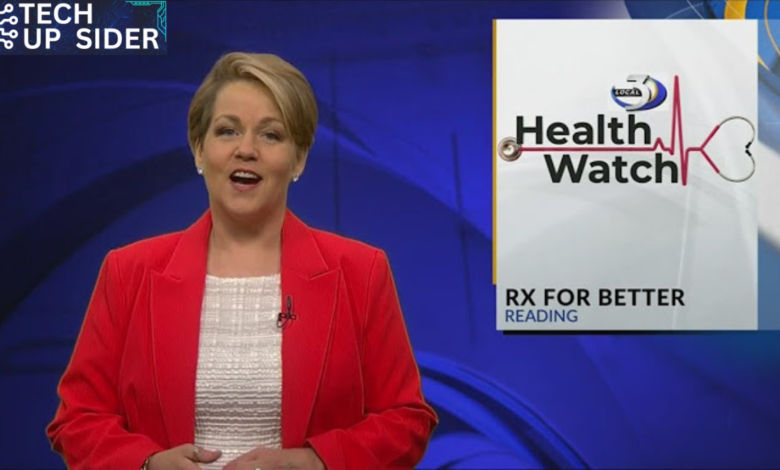Readability News: How the Digital Landscape is Evolving for Readers

Introduction to Readability and its Importance
Readability News The digital landscape is transforming unprecedentedly, reshaping how we consume content. With this evolution comes a critical focus on readability—a concept beyond just clear text. It encompasses the entire user experience and affects how effectively information can be absorbed Readability News.
In today’s fast-paced world, people are not just reading; they’re scanning, skimming, and seeking instant gratification from their digital encounters. As screens replace pages and pixels take precedence over print, understanding readability has never been more vital for creators and consumers Readability News.
As we delve into the latest Readability News, we’ll explore the trends shaping our reading habits in this digital era. Join us as we uncover how technology influences these changes while considering what lies ahead for readers everywhere.
The Growing Trend of Digital Reading

Readability News reading is on the rise, transforming how people consume content. With smartphones and tablets, readers can access various materials anytime, anywhere Readability News.
E-books have surged in popularity. They offer convenience that traditional books can’t match. The lightweight format allows users to carry entire libraries without the bulk Readability News.
Moreover, audiobooks are gaining traction. Busy lifestyles make listening to stories during commutes or workouts an appealing option Readability News.
Social media platforms also contribute to this trend. Readers share articles and recommendations at lightning speed, fostering communities around various genres and topics Readability News.
This shift toward digital formats sparks new possibilities for engagement with text. Readers can highlight sections, leave comments, or interact directly with authors through online discussions Readability News.
As technology continues to evolve, so does our relationship with written content—making reading more accessible than ever before Readability News.
Impact of Technology on Reader Preferences
Technology has significantly reshaped how readers engage with content. Mobile devices, e-readers, and apps have made reading more accessible.
Readers now prefer bite-sized information that they can consume on the go. Scrolling through articles or swiping through pages provides a quick fix for busy lifestyles.
Moreover, multimedia elements like videos and infographics cater to varied learning styles. This blend of formats keeps users interested and enhances comprehension.
Personalization is another game-changer. Algorithms curate content based on user behavior, ensuring readers receive what truly matters to them.
As technology evolves, so do reader preferences. They seek instant gratification from their reading experiences while still craving depth and quality in the content they choose to engage with.
Changes in Content Formats
Content formats are transforming rapidly in the digital age. Traditional text articles no longer dominate the landscape as they once did.
Readers crave diversity. Infographics, videos, and podcasts are now popular choices. These formats cater to varying preferences and attention spans, making information more digestible.
Interactive content is also gaining traction. Quizzes and polls engage users while providing valuable insights into their interests. This dynamic approach encourages deeper interaction with the material.
Social media platforms have significantly influenced these changes. Bite-sized content thrives there, requiring creators to adapt quickly to shorter attention spans.
Furthermore, mobile devices dictate how content is delivered. Responsive design ensures readability on any screen size, enhancing user experience across all mediums.
As audiences become savvier about what they consume digitally, adapting content formats will be crucial for those seeking to capture readers’ interest effectively.
Emergence of Artificial Intelligence in Readability
Artificial Intelligence is transforming the way we approach readability. Algorithms can now analyze text structures, identifying complex sentences that may confuse readers. This ensures content is accessible to a broader audience.
AI tools also personalize reading experiences. They assess individual preferences and suggest tailored content based on past behavior. This not only keeps readers engaged but enhances their overall satisfaction.
Moreover, AI-driven platforms provide real-time feedback for writers. Suggestions for more straightforward language or apparent formatting help create more digestible material.
Natural language processing allows machines to understand context better than ever before. As a result, content becomes more relatable and accessible to follow.
This technological evolution promises significant changes in how we consume written information in digital spaces. Readers will benefit from various options designed specifically for them, making every reading experience unique and enjoyable.
Balancing Readability with User Experience
Balancing readability with user experience is crucial in today’s digital landscape. Readers crave easy-to-digest content, but they also seek engaging interactions.
Design plays a significant role. A clean layout enhances comprehension, while clutter can distract and frustrate users. It’s essential to prioritize text clarity alongside visual appeal.
They are choosing the right font size and typeface matters, too. These elements influence how quickly information is absorbed. A well-structured hierarchy helps guide readers through the content seamlessly.
Moreover, interactivity should enhance rather than hinder readability. Incorporating multimedia elements like videos or infographics can enrich understanding without overwhelming visitors.
Striking this balance fosters a more enjoyable reading experience—a key factor for retaining audience attention in an age of distractions. Prioritizing both aspects ensures users leave satisfied and informed every time they engage with your material.
Future Predictions for Readability in the Digital World
As we look ahead, readability in the digital landscape will likely undergo significant transformations. Technological advancements may make content more personalized, catering to individual reader preferences.
Augmented reality (AR) could redefine how we consume text. Imagine reading a book where visuals come alive right before your eyes. This immersive experience will change our understanding of traditional reading.
Voice-assisted technologies are also on the rise. Users might prefer listening to articles instead of reading them, pushing creators to enhance auditory clarity and engagement.
Moreover, AI-driven algorithms will increasingly curate what readers see based on their habits and interests. This shift could lead to an echo chamber effect and foster deeper connections with tailored content.
The focus on accessibility will also grow stronger. Features that support diverse reader needs—such as dyslexia-friendly fonts or adjustable text sizes—will be crucial for inclusive design in the future.
Conclusion
The digital landscape constantly shifts, and readability remains at the forefront of this evolution. As reader preferences continue to change, content creators must adapt to keep audiences engaged. The rise of technology has opened up new avenues for consuming information, whether through innovative formats or advanced tools powered by artificial intelligence.
As we look ahead, balancing readability with user experience will be crucial. Content that captures attention while being easy to digest will likely dominate the scene. With ongoing advancements in AI and other technologies, we can expect even more tailored reading experiences that cater to individual needs.
Anyone creating digital content must stay updated on these trends. Embracing changes while focusing on clarity and accessibility may define the next chapter in readability news.





